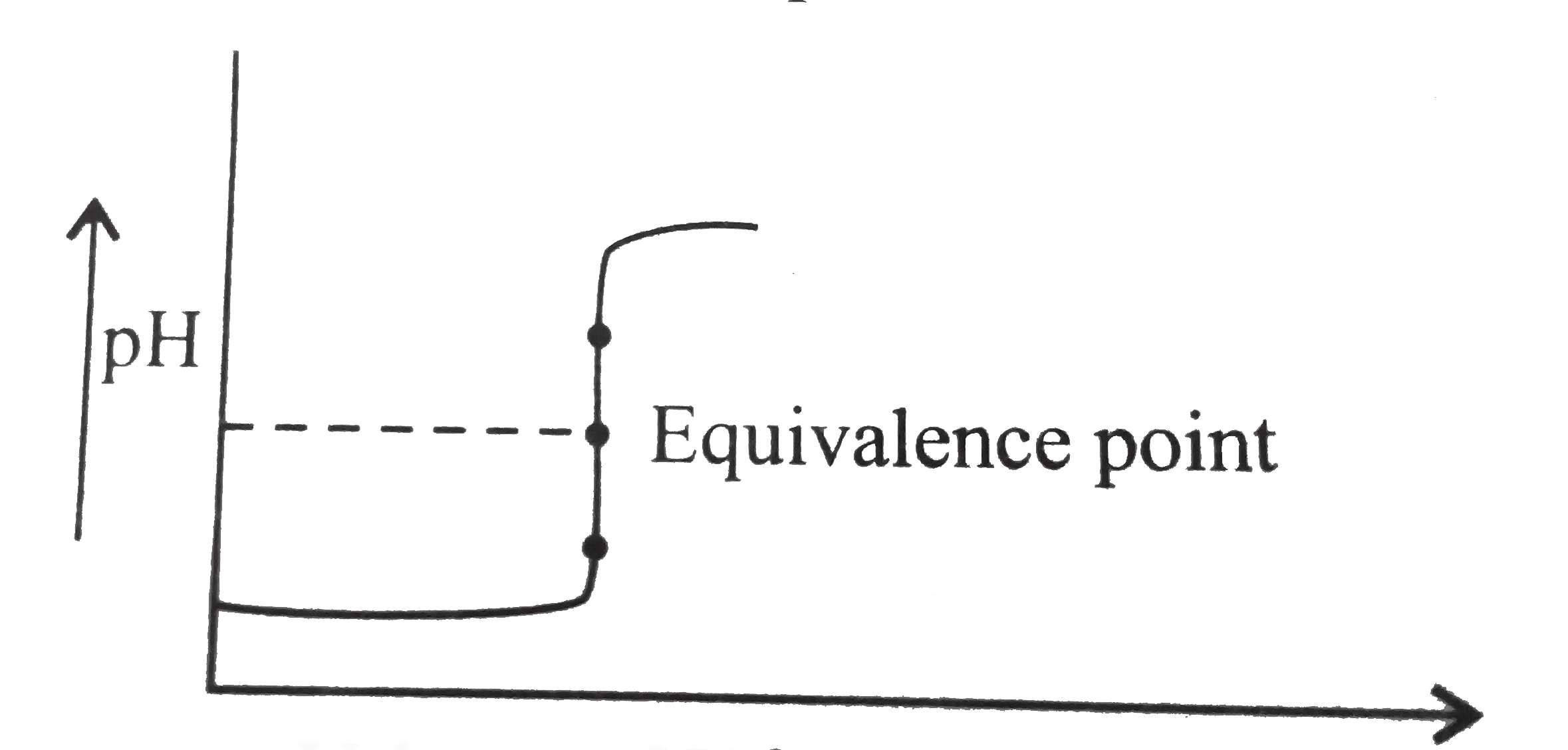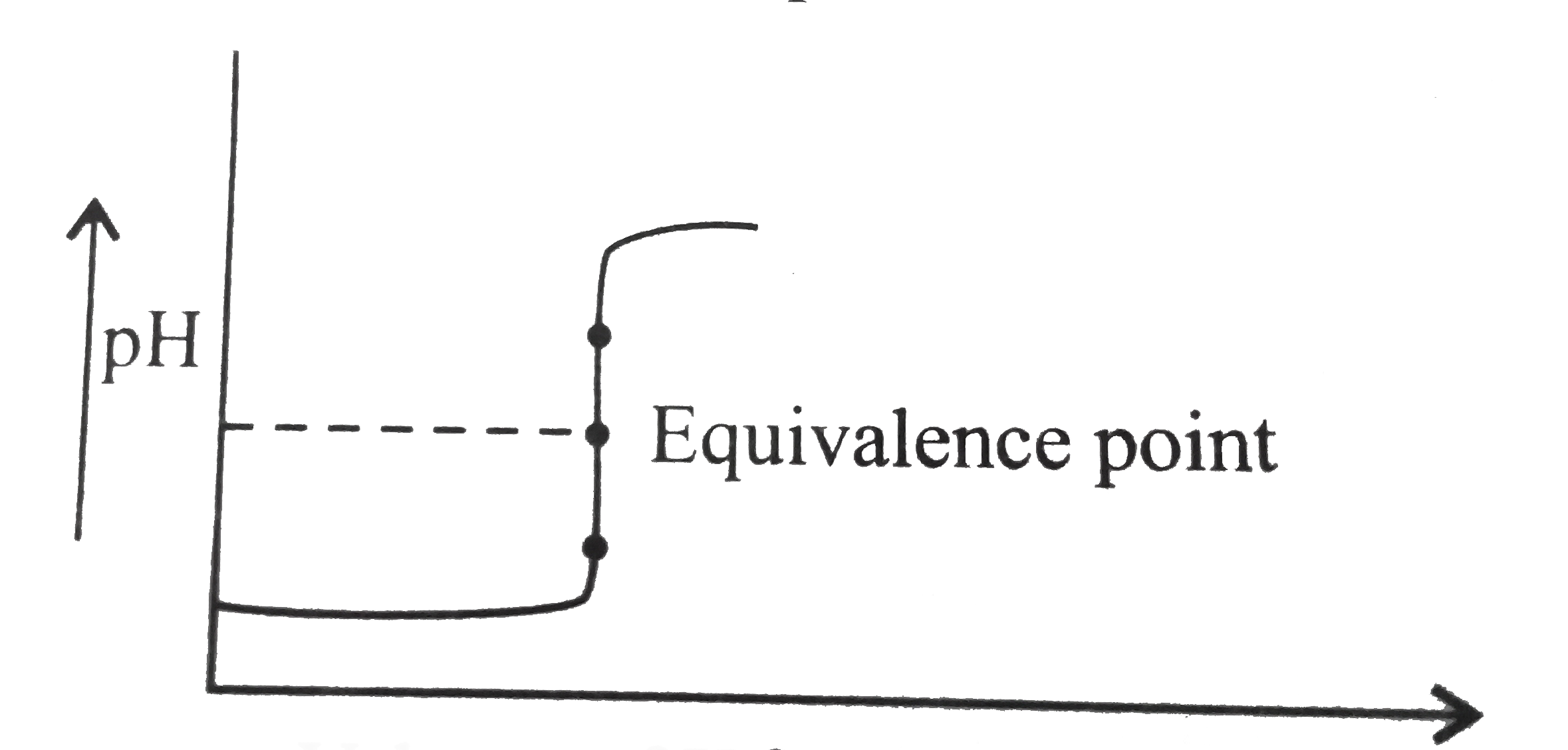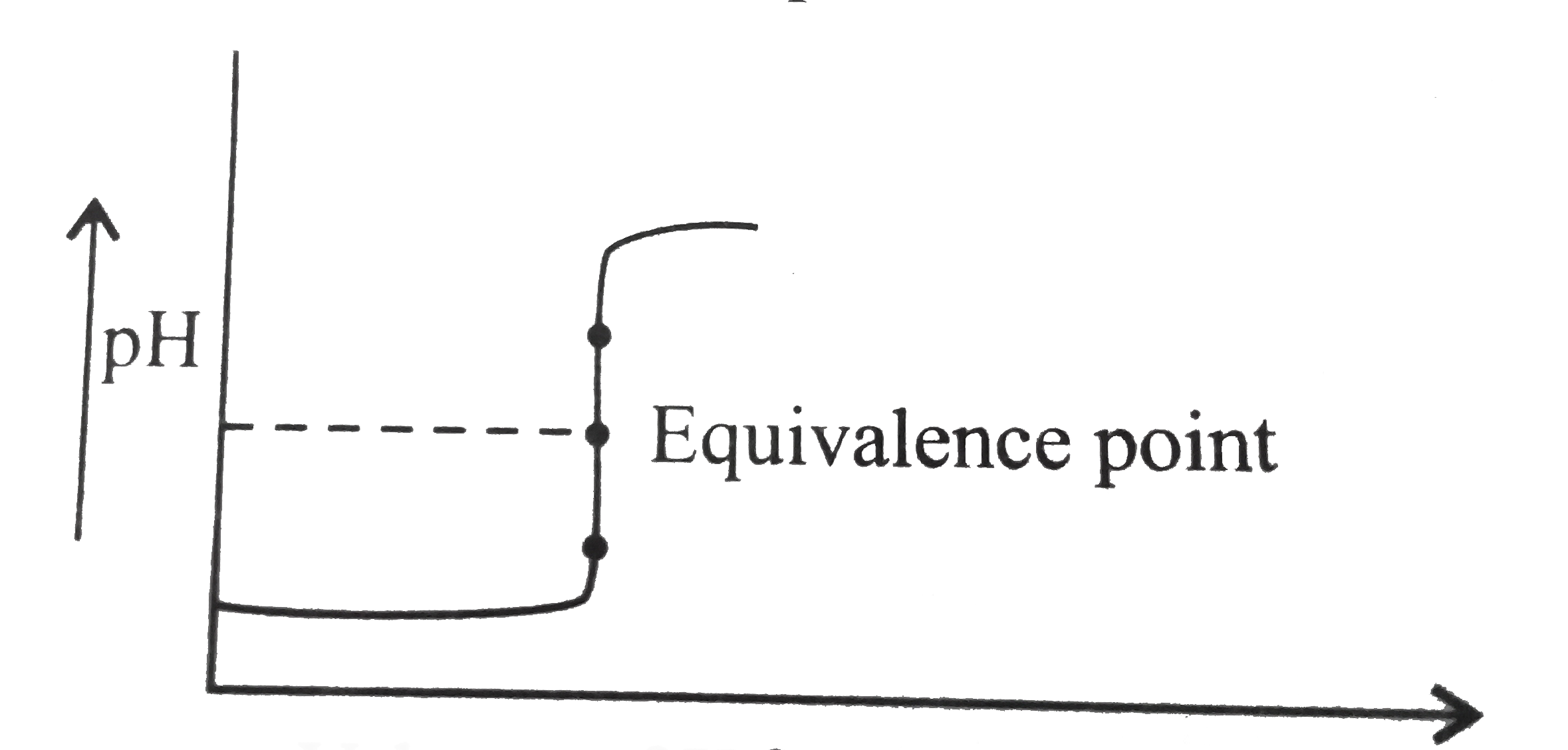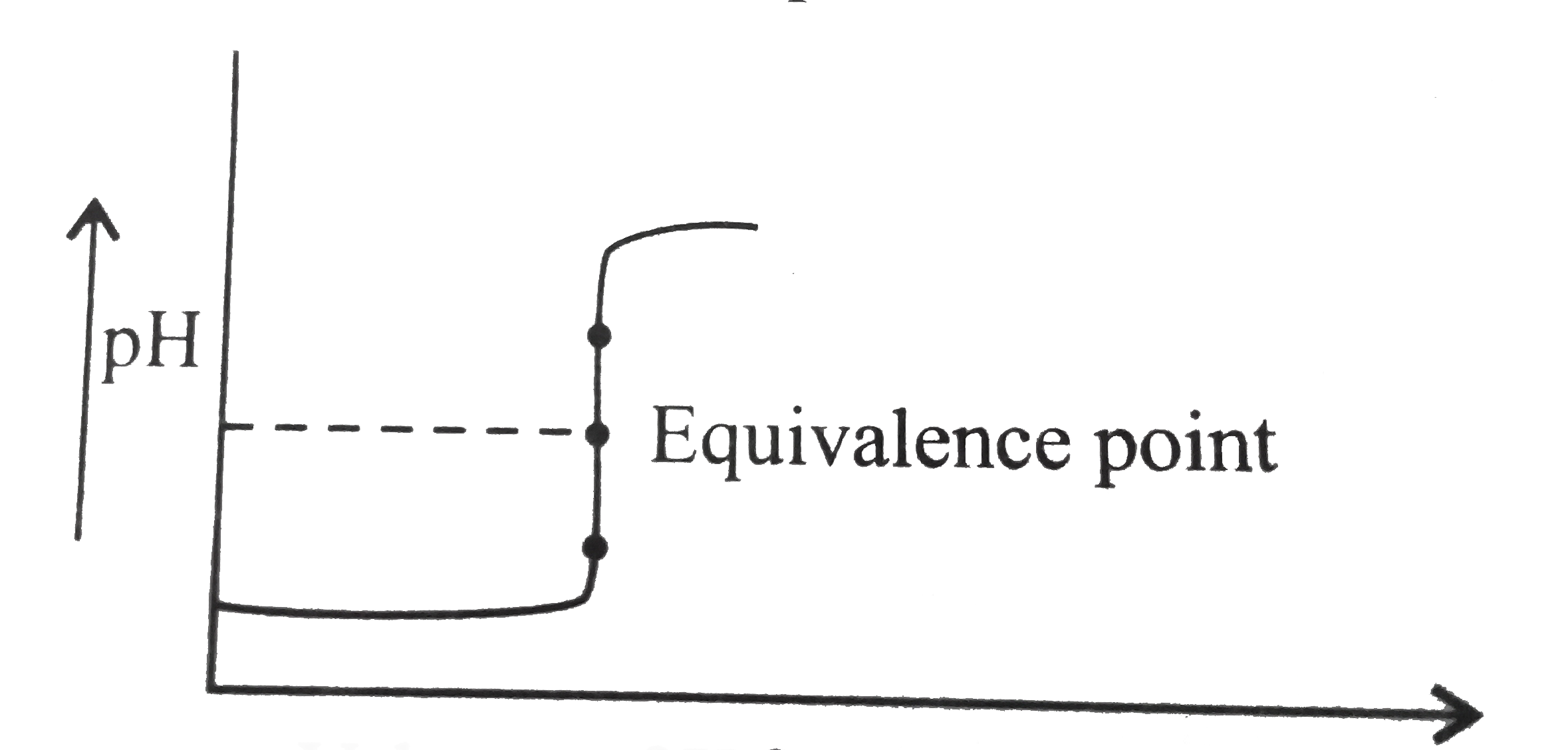Ferric alum is the indicator in the titration of Ag⊕ with SCNΘ when (a)_____colour appears at the end point .
The correct Answer is:Red
To solve the question regarding the color that appears at the endpoint of the titration of Ag+ with SCN− using ferric alum as an indicator, we can follow these steps:
1. Understanding the Reaction:
- In this titration, silver ions (Ag+) react with thiocyanate ions (SCN−) to form a complex. The reaction can be represented as:
\(
Ag^{+} + SCN^{-} \rightarrow (Ag(SCN))^{+}
\)
- As more SCN− is added, the complex can further react to form a more stable complex.
2. Formation of the Complex:
- The complex formed is (Ag(SCN))+, which can further react with ferric ions (Fe3+) from ferric alum to form a red-colored complex:
\(
(Ag(SCN))^{+} + Fe^{3+} \rightarrow (Fe(SCN))^{2+} \text{ (red complex)}
\)
- This red complex is responsible for the color change observed at the endpoint of the titration.
3. Identifying the Endpoint Color:
- The endpoint of the titration is indicated by the appearance of a red color due to the formation of the iron(III) thiocyanate complex, (Fe(SCN))2+.
4. Conclusion:
- Therefore, the blank in the question can be filled with "red color".
Final Answer:
Ferric alum is the indicator in the titration of Ag+ with SCN− when red color appears at the endpoint.
---
- In this titration, silver ions (Ag+) react with thiocyanate ions (SCN−) to form a complex. The reaction can be represented as:
\(
Ag^{+} + SCN^{-} \rightarrow (Ag(SCN))^{+}
\)
- As more SCN− is added, the complex can further react to form a more stable complex.
- The complex formed is (Ag(SCN))+, which can further react with ferric ions (Fe3+) from ferric alum to form a red-colored complex:
\(
(Ag(SCN))^{+} + Fe^{3+} \rightarrow (Fe(SCN))^{2+} \text{ (red complex)}
\)
- This red complex is responsible for the color change observed at the endpoint of the titration.
- The endpoint of the titration is indicated by the appearance of a red color due to the formation of the iron(III) thiocyanate complex, (Fe(SCN))2+.
- Therefore, the blank in the question can be filled with "red color".
Ferric alum is the indicator in the titration of Ag+ with SCN− when red color appears at the endpoint.
Topper's Solved these Questions
- QUALITATIVE INORGANIC SALT ANALYSISBOOK - CENGAGE CHEMISTRY ENGLISHCHAPTER - QUALITATIVE INORGANIC SALT ANALYSISEXERCISE - Exercises (True And False )
20 Videos
- QUALITATIVE INORGANIC SALT ANALYSISBOOK - CENGAGE CHEMISTRY ENGLISHCHAPTER - QUALITATIVE INORGANIC SALT ANALYSISEXERCISE - Exercises Archives (Linked Comprehension)
2 Videos
- QUALITATIVE INORGANIC SALT ANALYSISBOOK - CENGAGE CHEMISTRY ENGLISHCHAPTER - QUALITATIVE INORGANIC SALT ANALYSISEXERCISE - Exercises (Integer) (Naming And Terminology
15 Videos
- P-BLOCK GROUP 18 ELEMENTS - THE INERT GASESBOOK - CENGAGE CHEMISTRY ENGLISHCHAPTER - P-BLOCK GROUP 18 ELEMENTS - THE INERT GASESEXERCISE - Ex 5.1 (Objective)
14 Videos
- REDUCTION AND OXIDATION REACTION OF ORGANIC COMPOUNDSBOOK - CENGAGE CHEMISTRY ENGLISHCHAPTER - REDUCTION AND OXIDATION REACTION OF ORGANIC COMPOUNDSEXERCISE - SUBJECTIVE TYPE
4 Videos
Similar Questions
Statement-1:Phenolphathalein can be used as indicator in the titration of weak acid with NaOH.
Statement-2 :Near the end point in the titration of weak acid with NaOH, the pH of the solutions is alkaline due to hydrolysis of anion.
View SolutionViolet colour appear in glass when we add-
View SolutionFerric alum gives deep red colour with NH4SCN due to the formation of :
View SolutionFerric alum gives deep red colour with NH4SCN due to the formation of :
View SolutionRam can see the purple colour of an acidic indicator below pH=5.5 only and the blue colour only above pH=8.50 .How many times that of acidic form, must the concentration of the basic form at least be for Ram to see the end point of titration of HCl with NaOH?
View SolutionIn acid-base titration react rapidly to neutralise each other. Equivalence point is a point at which the acid and the base (or oxidising agent and reducing agent) have beem added in equivalent quantities. The end point in the point at which the titration stops. since the purpose of the indicator is to stop the titration close to the point at which the acid and base were added in equivalent quantities, it is important that the equivalent point and the end point be as close as must change colour at a pH close to that of a solution of the salt of the acid base. Singificantly, the pH changes most rapidly near the equivalent point. The exact shape of a titration curve depends on Ka and Kb of acid and base.

The curve represents the titration of
View SolutionIn acid-base titration react rapidly to neutralise each other. Equivalence point is a point at which the acid and the base (or oxidising agent and reducing agent) have beem added in equivalent quantities. The end point in the point at which the titration stops. since the purpose of the indicator is to stop the titration close to the point at which the acid and base were added in equivalent quantities, it is important that the equivalent point and the end point be as close as must change colour at a pH close to that of a solution of the salt of the acid base. Singificantly, the pH changes most rapidly near the equivalent point. The exact shape of a titration curve depends on Ka and Kb of acid and base.

The pH at equivalence point is
View SolutionIn acid-base titration react rapidly to neutralise each other. Equivalence point is a point at which the acid and the base (or oxidising agent and reducing agent) have beem added in equivalent quantities. The end point in the point at which the titration stops. since the purpose of the indicator is to stop the titration close to the point at which the acid and base were added in equivalent quantities, it is important that the equivalent point and the end point be as close as must change colour at a pH close to that of a solution of the salt of the acid base. Singificantly, the pH changes most rapidly near the equivalent point. The exact shape of a titration curve depends on Ka and Kb of acid and base.

Which of the following curves indicates the titration of a weak diprotic acid by KOH of equivalent strength?
View SolutionIn acid-base titration react rapidly to neutralise each other. Equivalence point is a point at which the acid and the base (or oxidising agent and reducing agent) have beem added in equivalent quantities. The end point in the point at which the titration stops. since the purpose of the indicator is to stop the titration close to the point at which the acid and base were added in equivalent quantities, it is important that the equivalent point and the end point be as close as must change colour at a pH close to that of a solution of the salt of the acid base. Singificantly, the pH changes most rapidly near the equivalent point. The exact shape of a titration curve depends on Ka and Kb of acid and base.

The following curve represents titration curve of HCI against KOH. The pH at equivalent point is
Examine the titration curve below and answer the question.

View SolutionIodine titration can be iodemotric or iodimetric depending on using iodine directly or indirectly is an oxidising agent in the redox titration.
a. Iodimetric titration in which a standard iodine solution is used as an oxidant and iodine is directly or indirectly titrated against a reducing agent. For example.
2CuSO4+4KJ→Cu2I2+2K2SO4+I2
b. Iodimetric procedures are used for the datermination of strength of reducing agent such as thiosulphates, sulphites, arsenties adn stanous chloride etc. by titrating them against standard solution of iodine in a burette.
2Na2SO3→2NaI+Na2S4O6
Starch is used as indicator near the end point whilch form blue colour complex with I−3. The blue colour disappeams when there is not more of free I2 .
The volume of KI solutioin used for CuSO4 will be
View Solution
